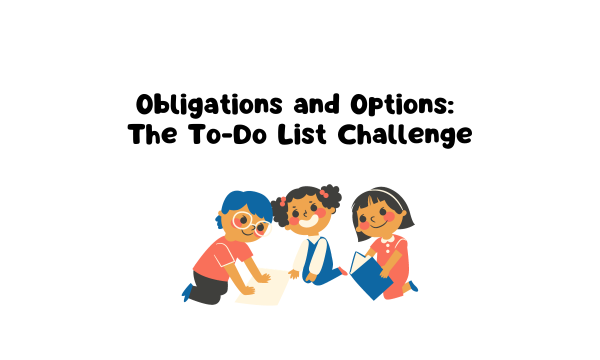Obligations and Options: The To-Do List Challenge
Introduction
Ever feel like your to-do list is running your life, rather than the other way around? You're not alone! Welcome to "Obligations and Options: The To-Do List Challenge." This interactive activity is designed to turn the mundane task of list-making into a powerful language-learning tool. Whether you're a student eager to master the nuances of English or a teacher looking to engage your class, this challenge is for you. We'll dive into the language of obligation, exploring how modal verbs like "must" and "should" can transform a simple list into a dynamic learning experience. Let's get started and turn your to-do list into a lesson in linguistic mastery!
Activity Title:
"Obligations and Options: The To-Do List Challenge"
Objective:
To help students practice and understand the language of obligation in English through the creation and discussion of to-do lists.
Materials Needed:
- Whiteboard and markers
- Paper and pens for students
- Example to-do list (prepared by the teacher)
Activity Steps:
1. Introduction (10 minutes):
- Begin by discussing the concept of to-do lists. Ask students if they use them and how they keep track of their tasks.
- Introduce the language of obligation, explaining modal verbs like "should," "could," and "must," and semi-modal phrases like "I'd love to," and functional language like "I really need to."
2. Teacher's To-Do List (10 minutes):
- Share your example to-do list, using the language of obligation.
- Conduct a listening task: students note down what they think are the most important tasks on your list.
3. Creating Personal To-Do Lists (15 minutes):
- Students write their own to-do lists, including at least one fictional obligation.
- Encourage the use of various modal and semi-modal verbs.
4. Pair Sharing (15 minutes):
- Students pair up and discuss their to-do lists.
- Each student tries to guess which task on their partner's list is fictional.
5. Group Discussion (10 minutes):
- Gather as a class and discuss the merits of to-do lists.
- Encourage opinions about their usefulness, effective methods, and personal preferences.
6. Reflection and Homework (5 minutes):
- Ask students to reflect on what they learned about the language of obligation.
- Assign a homework task: visit elafree.com for further learning and prepare to share findings in the next class.
Additional Tips:
- Adapt the time for each section based on your class length and student dynamics.
- Ensure that every student participates in the discussions.
- Offer feedback and correction on language use throughout the activity.
This activity combines listening, writing, speaking, and critical thinking skills, all while focusing on the language of obligation. It's also a great way to make learning English functional and relatable to everyday life.
Conclusion
Mastering the language of obligation through to-do lists can make your daily tasks more manageable and your English skills more polished. By incorporating modal verbs and semi-modal phrases, you'll not only become more organized but also more articulate. Keep practicing with the activities and tips provided, and revisit this guide whenever you need a refresher. Remember, consistent practice is key to mastering any language. Happy learning, and may your to-do lists always be clear and compelling!

